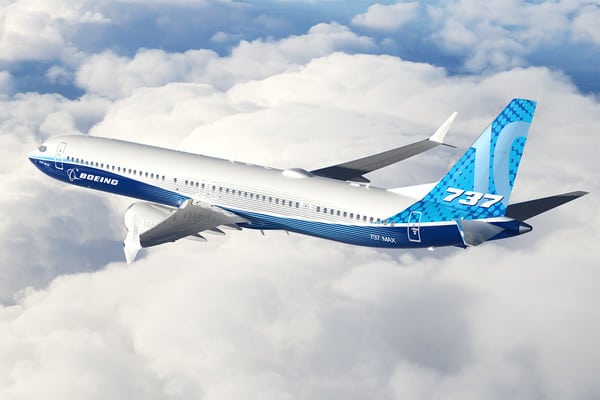Aviation
Boeing would suspend max 10 project if certification is delayed.

Currently, Boeing has received 640 orders for Boeing 737 Max 10 aircraft, which compete with the Airbus A321 Neo. Boeing is looking for a regulatory deadline that will allow them to begin services. Even after the launch, a few airlines are eager to place more orders. If the airline does not receive clearance to launch the aircraft within the estimated time frame, further job growth at the Renton assembly plant may be curtailed.
Recently, three Chinese airlines placed the largest order to Airbus, valued $37 billion, for around 292 aircraft. Beijing indicates that it supports the Airbus brand in its home nation. However, Boeing is under pressure to release new aircraft while still maintaining its market presence.
Calhoun told Aviation Week editors at Boeing’s new headquarters in Arlington, Virginia, that the current MAX 10 design is a “all-or-nothing” package that regulators must accept as-is — without the safety update that some have pushed for.
The FAA told Boeing earlier this year that the Max 10 might not be certified by the end of the year. An airline must be certified before it can begin operations.
If Boeing does not receive certification, it will be required to install an alerting system in the cockpits of the Max 10s under laws that go into effect in 2023. That is, unless the US Congress grants a waiver.
Boeing Max has already begun flying and has received favourable feedback from airlines; in fact, Akasa India’s newest airline has made a fresh order, Boeing IAG has ordered over 50 aircraft, and Delta is in talks to acquire more. Boeing maintains regular contact with the regulator to ensure that Max aircraft receive proper flying, maintenance, and training.
Features :
- Boeing 737 max has length 43.8 metres, or 143 feet 8 inches, making it two rows or 66 inches longer than the MAX-9.
- 230 passengers in a single-class configuration, 12 more than the MAX-9.
Doors at the mid-exit will be 4 inches wider to increase the exit limit rating. - a 3215 nm range. somewhat shorter (3,515nm) than MAX-8 and -9, but 265nm longer than -900ER (A321NEO range c4000nm)
- MTOW is slightly higher, around 92,000 kg.
- Leap-1B engine with potential thrust increase
- Levered MLG that extends during takeoff by up to 24 cm (9.5 in) to avoid tail hit.
- improved body shape to lower the possibility of tail hits.
- More approaches and landings are possible at Flaps 40 thanks to a “enhanced flap design.”
- Modifications to the maximum landing weight centre of gravity are made to prevent “tail tip” incidents.
- Entry into service approx. 2023

Aviation
COMAC Unveils Plans for the C929 to Rival Airbus and Boeing

After the success of China’s first C919 aircraft, the country is setting its sights on developing a larger plane. COMAC (Commercial Aircraft Corporation of China) has officially confirmed plans to build a widebody aircraft, marking a significant step in its aircraft lineup.
Traditionally, Airbus and Boeing dominate the widebody aircraft market, with decades of expertise in developing planes and engines capable of carrying heavy payloads. China, which currently relies on imported engines, is now aiming to challenge these giants with its own widebody jet, the C929, designed to compete with the Airbus A350 and Boeing 777.
American Airlines Is Looking for Flight Attendants: Apply Now
The C929 will be China’s first independently developed long-range widebody aircraft. It adheres to international airworthiness standards and boasts independent intellectual property rights. The baseline version is designed to seat 280 passengers and offers a range of 12,000 kilometers, catering to global demand for both regional and international air travel.
Russia, which also needs reliable narrowbody and widebody aircraft, could become a key customer for the C929. Additionally, China plans to target the broader Asian market as it continues to expand its aviation capabilities.
Close Call at Heathrow: BA Flight Narrowly Escapes Drone Collision
China’s aviation progress includes the ARJ21 (now called C909), a regional jet with 100 seats for shorter routes, and the C919, a narrowbody jet with 180 seats designed to rival the Boeing 737 MAX and Airbus A320. Both models have found increasing demand in the domestic market.
At China’s largest air show in Zhuhai, COMAC announced that Air China will be the launch customer for the C929 widebody jet, though details about order size and delivery timelines were not disclosed.
Other major deals announced by COMAC include:
- Hainan Airlines: Firm orders for 60 C919 and 40 C909 regional jets.
- Colorful Guizhou Airlines: 30 C909 jets, with 20 firm orders and 10 provisional agreements.
The C929, renamed from the CR929 after Russia withdrew from the joint development project in 2023, is expected to carry 280–400 passengers with a range of 12,000 kilometers, competing directly with Boeing’s 787 Dreamliner.
According to COMAC’s deputy general manager, Tong Yu, the first fuselage section of the C929 is expected by September 2027, with prototype test flights anticipated soon after.
-

 Aviation2 months ago
Aviation2 months agoMicrosoft Flight Simulator Raises $3 Million to Bring Back the An-225 Mriya
-

 Airlines2 months ago
Airlines2 months agoQantas Engineers Stage Walkout Over Cost of Living Concerns
-

 Airlines2 months ago
Airlines2 months agoQatar Citizens Can Travel to the United States Without a Visa
-

 Aviation2 months ago
Aviation2 months agoQatar Airways bans these new Electronic Devices on plane
-

 Airlines2 months ago
Airlines2 months agoJapan Airlines Rolls Out Free Domestic Flights to International Passengers
-

 Defence2 months ago
Defence2 months agoWhich Country Has the Largest Fleet of Fighter Aircraft?
-

 Airport2 months ago
Airport2 months agoWestern Sydney Airport Welcomes Its First Plane After 6 Years of construction
-

 Aviation2 months ago
Aviation2 months agoDid you know ? Once Boeing 747 carried 1088 passenger in 1991








